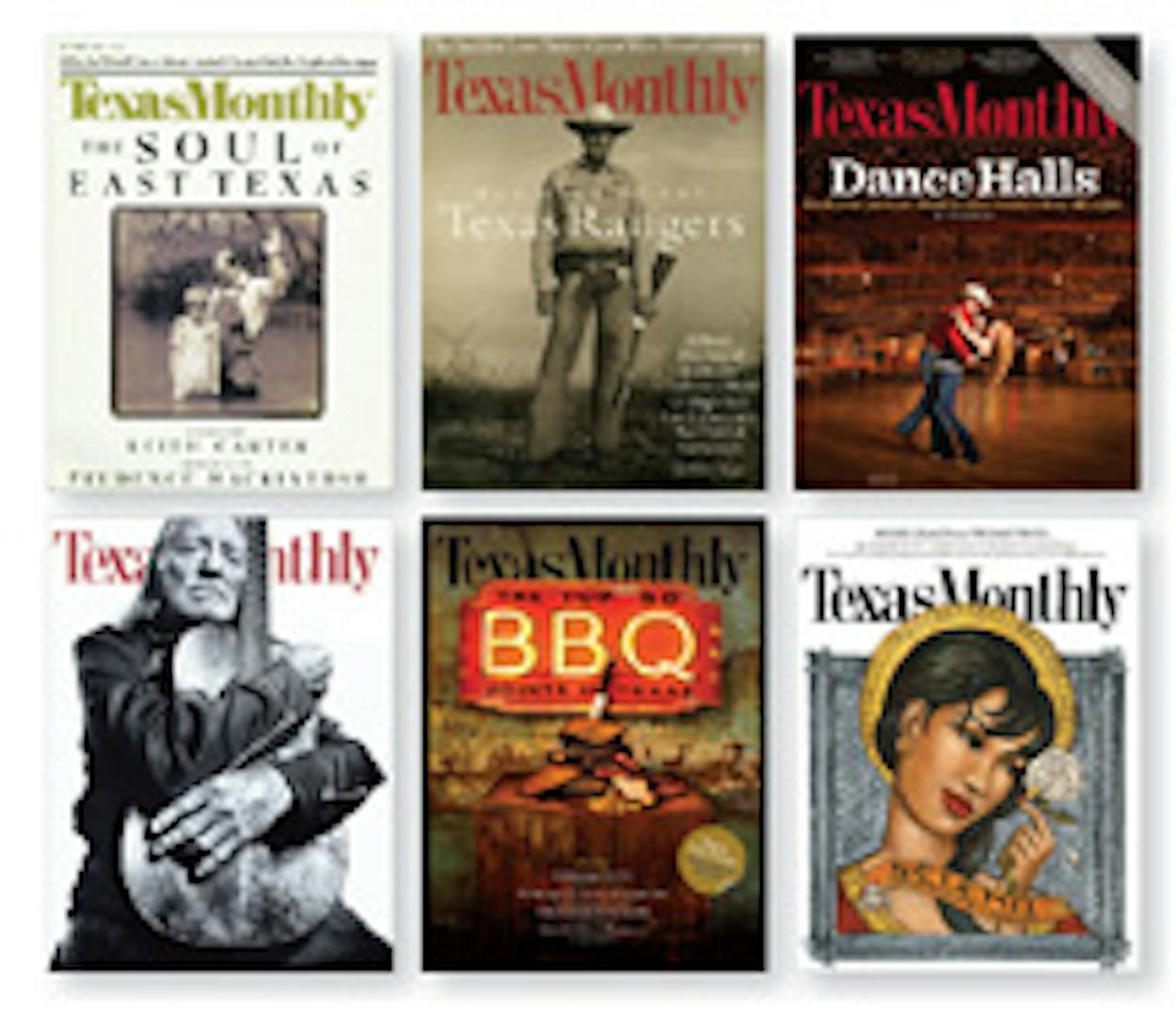One of the best—and the hardest—parts of being a magazine editor is deciding what goes on the cover every month. There is nothing else quite like that little rectangle of real estate. Book jackets and album covers are quieter, movie posters are less integral to the product, billboards are more remote. But a magazine cover is a stage unlike any other, conferring a singular status on the person or place that occupies it, setting the tone for everything on the pages that follow.
Part of a cover’s power derives from all the trouble involved in producing it (power and trouble that are both greatly diminished in digital tablet editions). I think about this every month. I think about how the image is going to be carefully printed on hundreds of thousands of sheets of glossy paper, then glued to the bound pages of the magazine, then stacked on pallets and trucked all over the state and the country to be delivered to subscribers and displayed at newsstand after newsstand, in supermarkets, airports, bookstores, and anyplace fine periodicals are sold. I think about how the cover will be seen by far more people than those who actually purchase the magazine, on a friend’s coffee table or in the checkout line, and how the image will enter their minds and lead to unspoken thoughts I’ll never know.
The most obvious way to measure the success of a cover is newsstand sales. Every month we print around 350,000 copies of TEXAS MONTHLY, of which between 50,000 and 80,000 are sent to newsstands. Usually, about 50 percent of these copies get bought (the industry average is around 31 percent), but just like a major league baseball player, we strike out sometimes. Some covers sell well and some don’t. Last year’s “TV Texans” cover, for instance, was one of the worst-selling covers we’ve ever published (which I blame entirely on a poor concept; still wish I could have that one back). Some of our other whiffs include “Greetings From NASCAR, TX” (February 2007), “Astronaut Sex!” (May 2007), and “Free Food” (April 2009). As for “Perry for President?!?” (February 2010), let’s just say that newsstand sales for that issue don’t constitute a particularly strong endorsement of the idea.
But sales are only one metric we use to judge covers. Another is how well they represent the visually iconic qualities of Texas, of which there are many. Sometimes, when they feature celebrities, these covers themselves become part of the state’s iconography, as with Ann Richards straddling a Harley (July 1992), Willie Nelson embracing his guitar (May 2008), or Selena painted on a retablo (April 2010). But often, the most emblematic cover images don’t feature famous people at all—Keith Carter’s photo of an East Texas baptism (October 1989), Texas Ranger Joaquin Jackson standing tall with his rifle (February 1994), a butcher’s block piled high beneath a neon BBQ sign (June 2008), a couple doing a dip at a dance hall (December 2009). Some of these covers sold better than others, but they all managed to capture the look of Texas with indelible images.
In that regard, this month’s image of Coree Shiner, a cowgirl who dayworks in North Texas, is an instant classic. Photographer LeAnn Mueller, of the Texas barbecue Muellers, took the photo on the Slate River Ranch, in Perrin. It encapsulates one of those elusive moments where romance and reality intersect: Shiner glancing backward on her horse, her hair blowing, a shadow from her hat brim slanting across her face. The minute we saw it we knew it was something special, the perfect shot for Barney Nelson’s smart essay about cowgirls, an image that was more than ready to spend its thirty days on center stage.
And now it’s time for this cover to go out and have a life of its own.
NEXT MONTH
A college football extravaganza, including a profile of Gary Patterson, a sit-down with Mack Brown, guides to every major program in the state, and a scientific ranking of the greatest Texas coaches in NCAA history; senior editor John Spong on the tenth anniversary of 9/11; what it’s really like to run against Rick Perry; the history of Texas in quilts; and the water crisis in Midland.






